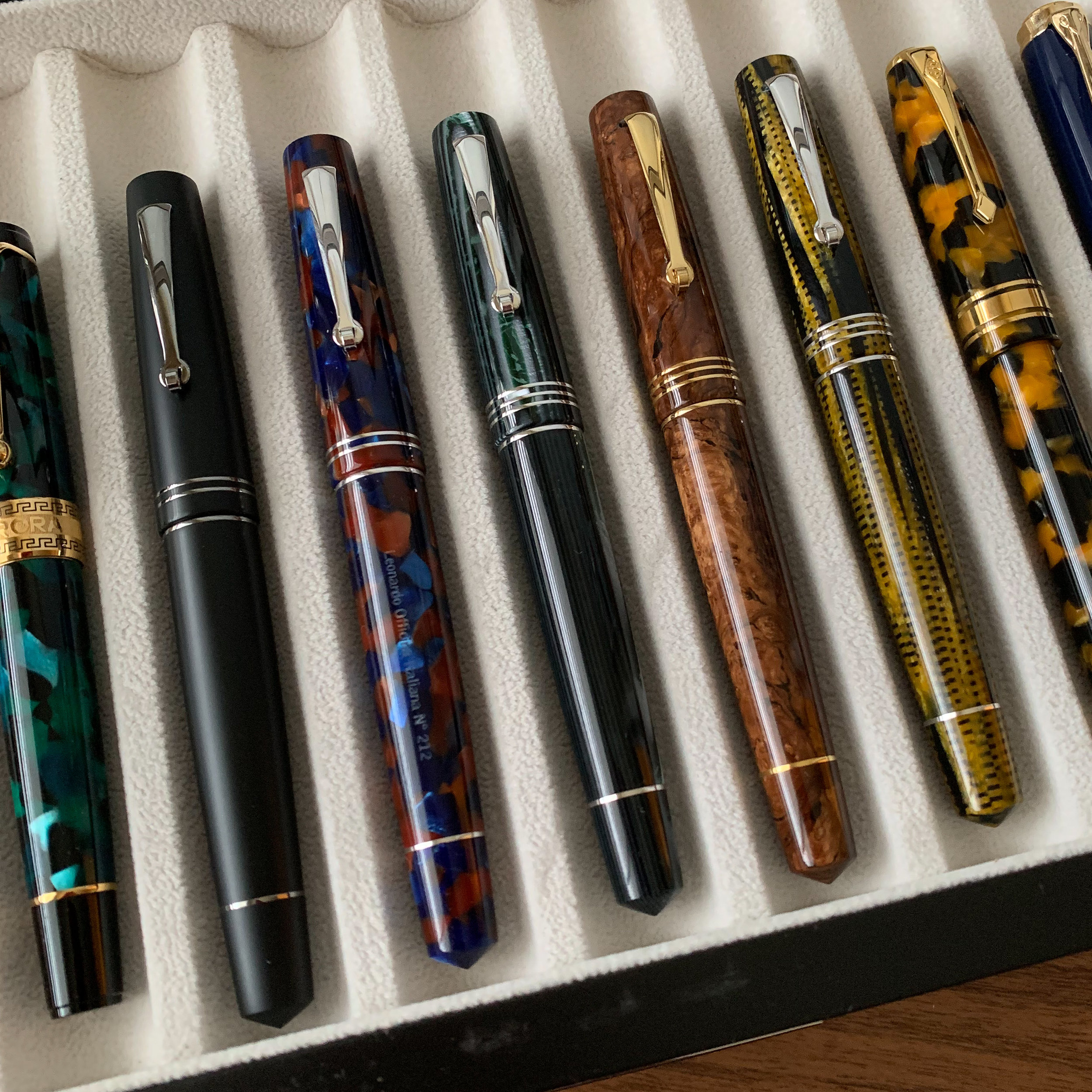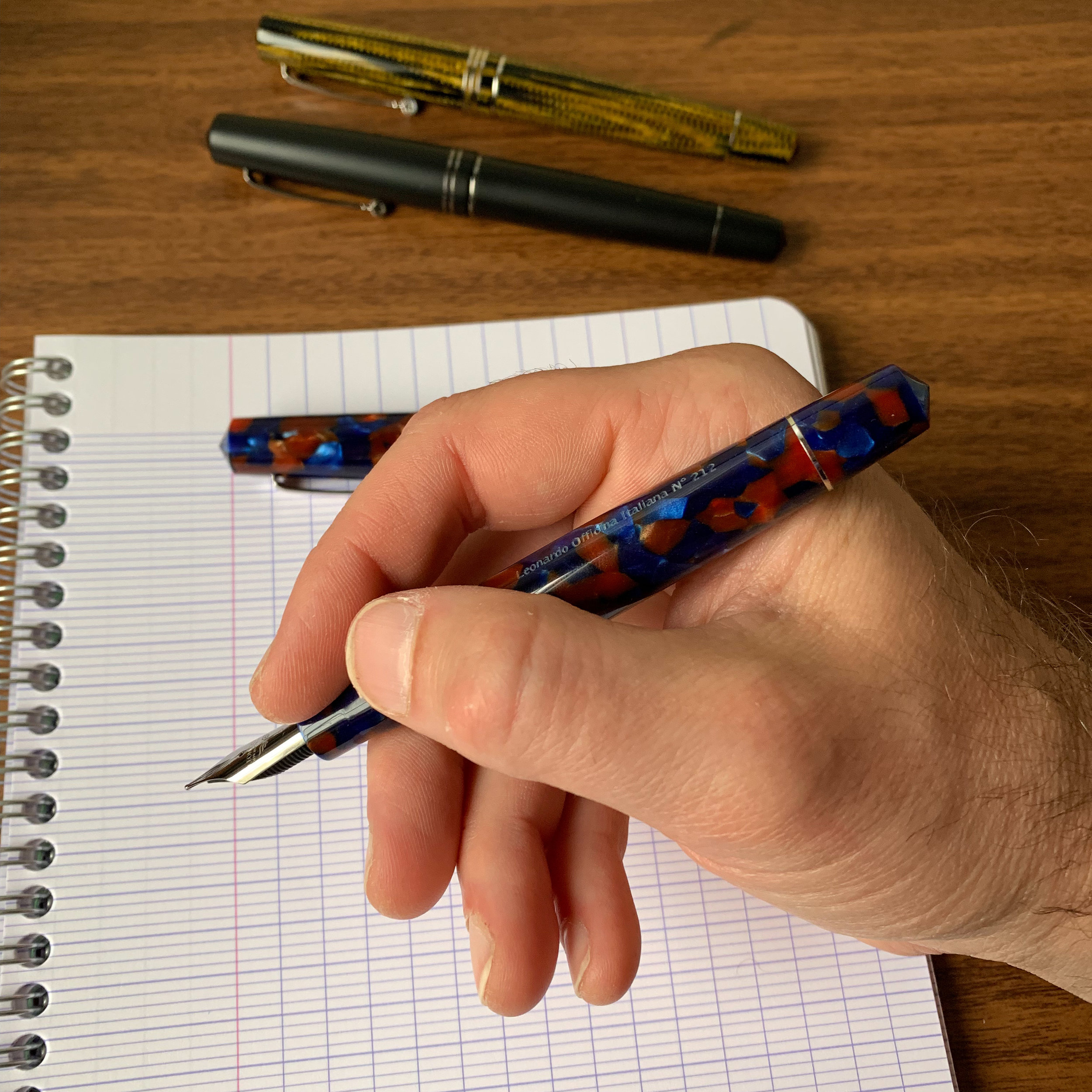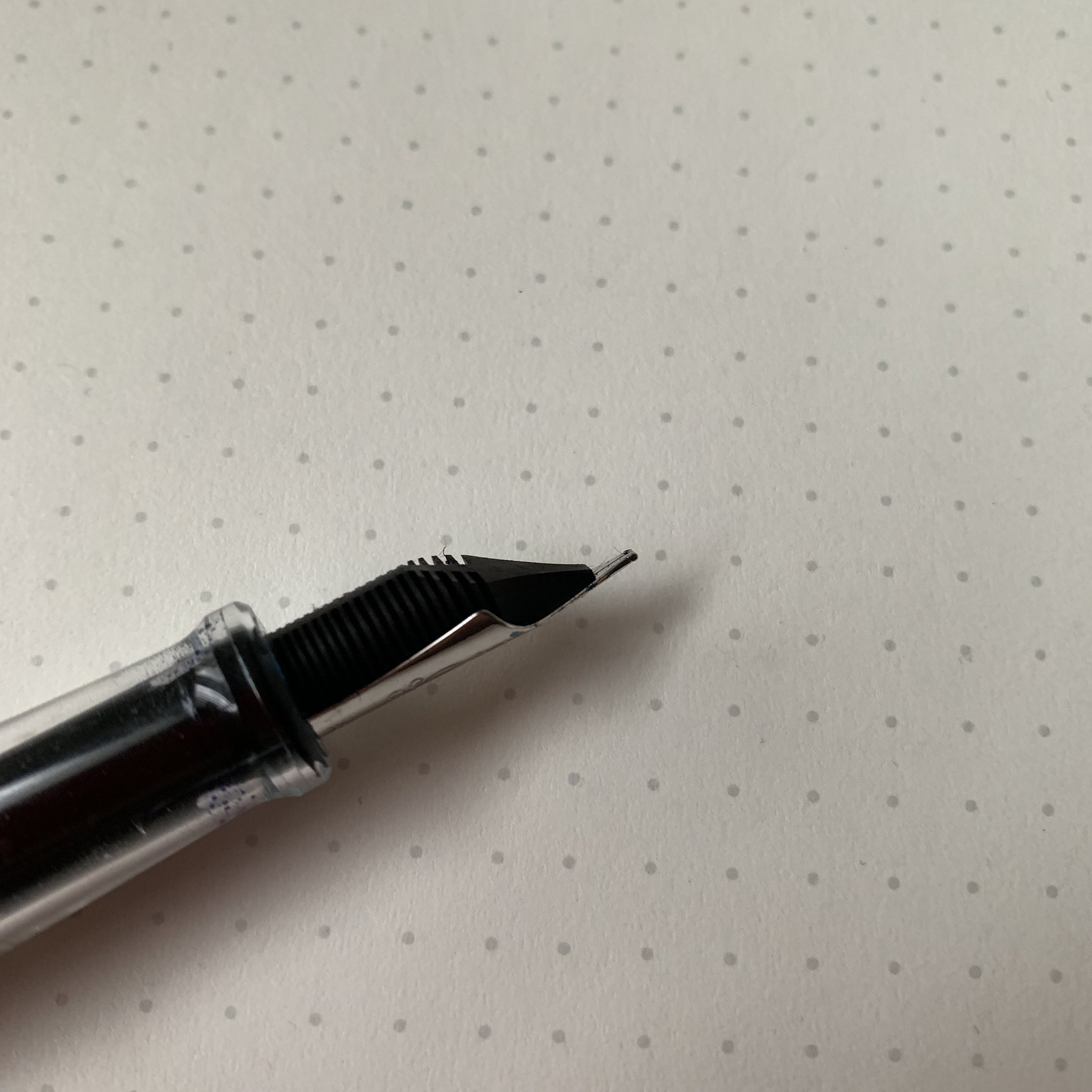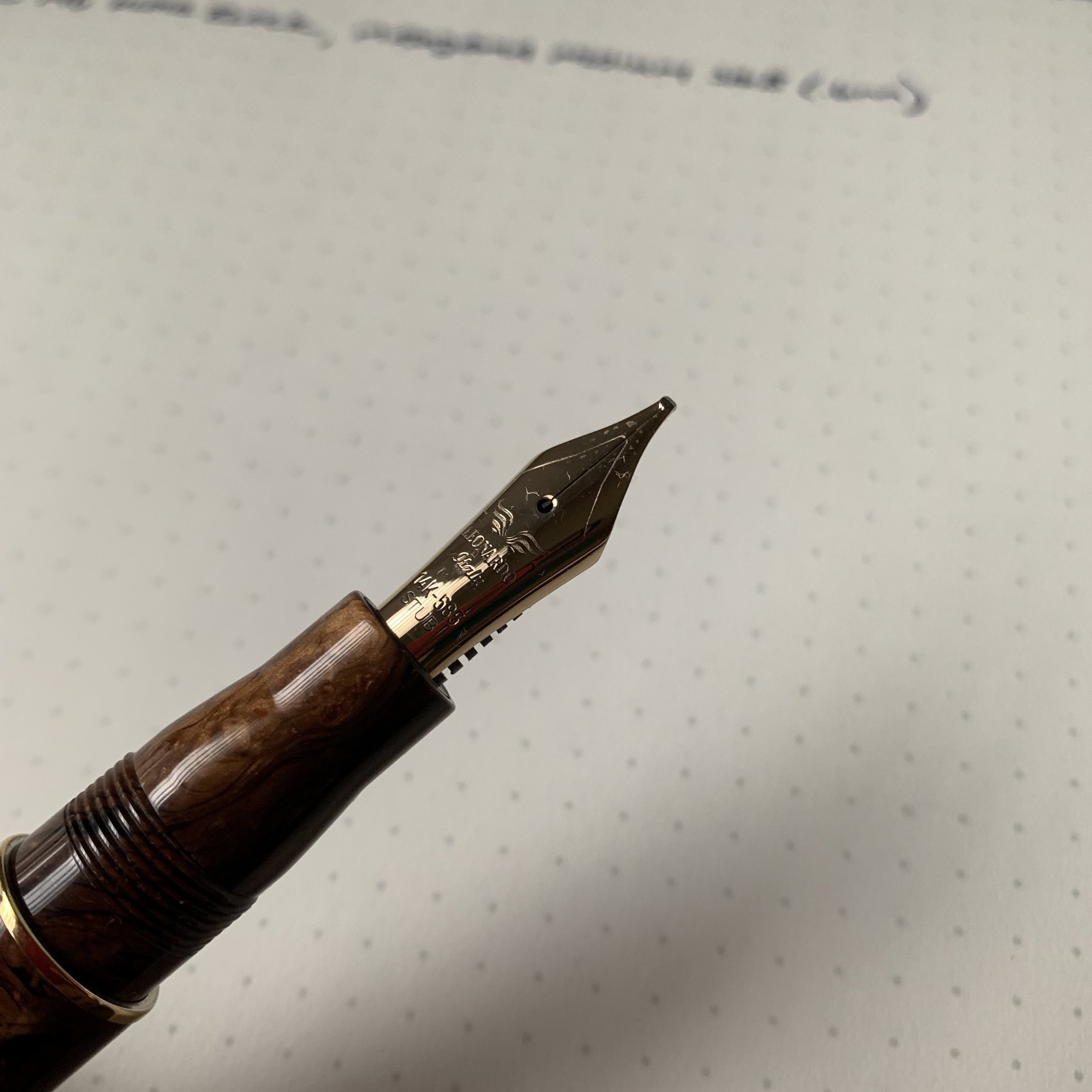For years, I went back and forth on whether to acquire the Delta Dolcevita, the flagship of now-defunct Italian pen company Delta. While I appreciated the depth of the orange material Delta used - a bright orange acrylic/cellulose acetate? - the pen was always just slightly too large for my taste, and the trim levels and scrollwork a little too ostentatious. I never ended up buying the classic Dolcevita, though I did briefly own the Dolcevita Soiree.
Leonardo uses Bock nibs, customized with an understated imprint. All of my Leonardo nibs have been well-tuned writers out of the box. The “roller clip” is another nice Delta legacy. Most of the standard Momento Zero pens feature stainless steel nibs, with gold nibs available on premium models.
Leonardo Officina Italiana is a new pen company run by former Delta craftsmen, and while you definitely notice the Delta heritage, Leonardo pens appeal to me because they are more understated, taking the best elements of Delta’s design and material choices and omitting the superfluous flourishes. The pens are “minimalist” in the best sense: they rely on a design that’s simple and straightforward without being boring, and focuses the attention Leonardo’s diverse array of materials that range from acrylics to celluloid to ebonite.
While I’ve previously reviewed Leonardo’s “flagship” pen, the Momento Zero, I wanted to separately review a recently released limited edition made available through Pen Chalet, which transposes the Delta Dolcevita’s orange and black color scheme onto the much more functional size and shape of the Momento Zero. Even better, the pen was made available in both a gloss and matte finish, with ruthenium trim. The pen pictured here sports the matte finish.
Like the other Momento Zero pens in my collection (I now have seven total), everything about this special edition is well-executed and makes for a quality, highly functional pen. The medium size and slightly tapered shape of the Momento Zero lends itself to longer writing sessions or all-day use, whether you post the pen or not. The matte finish on the section feels nice, similar to the matte finish on the Sailor Imperial Black, and provides good grip. The nib writes a smooth, relatively wet, western fine line. Like the other Momento Zeroes that are priced below $200, this pen features a steel nib and a “captured converter” filling system, meaning that you can either unscrew the section and remove the converter as you would with a traditional cartridge-converter pen, or you can remove the blind cap and work the converter like a piston-filler. As pictured below, even the converter sports ruthenium trim!
Did I mention Leonardo’s attention to detail? Most companies would not have bothered to plate the “non visible” components, such as the end of the converter under the blind cap. Things like this make me smile.
Takeaways and Where to Buy
I appreciate how Leonardo has chosen to focus its offerings on two classically styled pen models, the Momento Zero and the Furore, and expand the lineup by releasing these pens in new colors and new materials that include exclusive store collaborations. As I mentioned above, the pen featured here was an exclusive collaboration with our site sponsor Pen Chalet, and limited to a run of 25 pens. It sold out quickly. Fortunately, however, Pen Chalet and Leonardo have just launched a new, expanded collaboration that slightly tweaks the design of the pens. Check out the newest release, now available in orange and matte or gloss black acrylic with gold trim or in “Hawaii” acrylic with matte or gloss black acrylic and ruthenium trim. The orange/black/gold combination offers the classic “Delta Dolcevita” look, while the “dark Hawaii” is something truly unique to Leonardo. These pens are priced at the $199 price point - which I consider a bargain given the quality - and I’m looking forward to adding one of the “dark Hawaii” pens to my collection soon.
A few of the other Leonardo Momento Zero pens in my collection, including three from the high-end “Maestro” set made available last year.
Also stay tuned for the upcoming Momento Zero Grande, which will be a larger version of the standard pen featuring an integrated piston filling system and new materials. Follow @leonardo_pens on Instagram for details.
Disclaimer: This post contains affiliate links. I purchased the pen featured in this review using store credit generated through my participation in the Pen Chalet affiliate program, which is one method I use to acquire pens to review for the blog. Many thanks to Ron and Pen Chalet for making this review possible!







